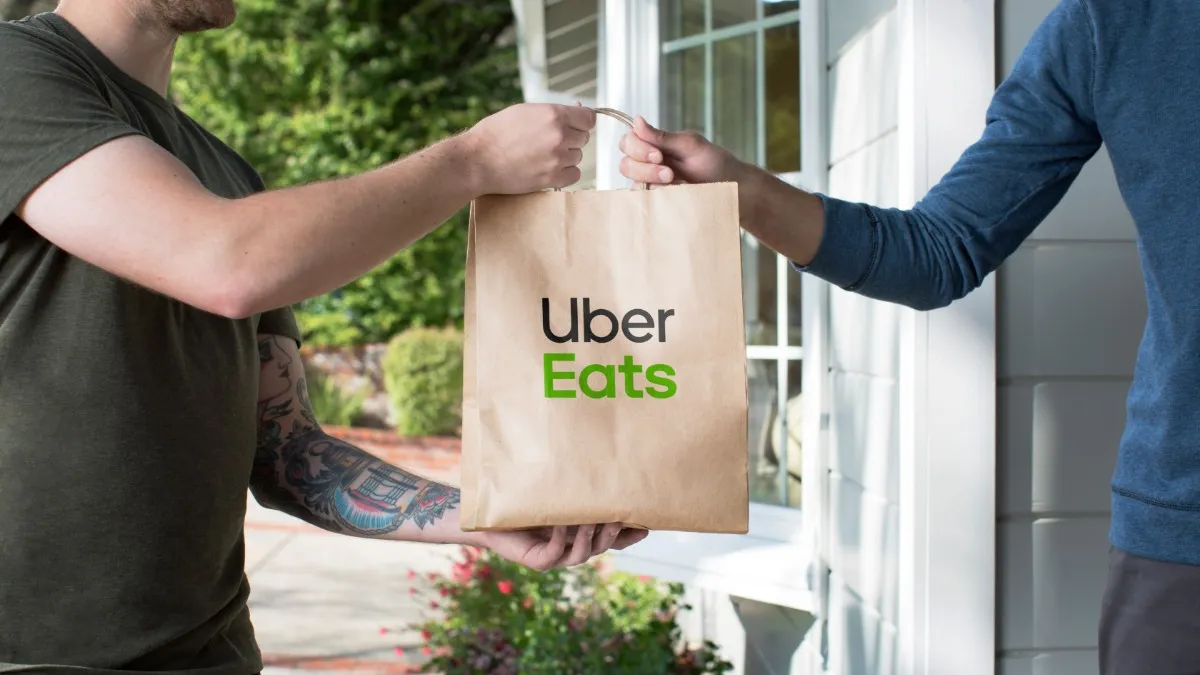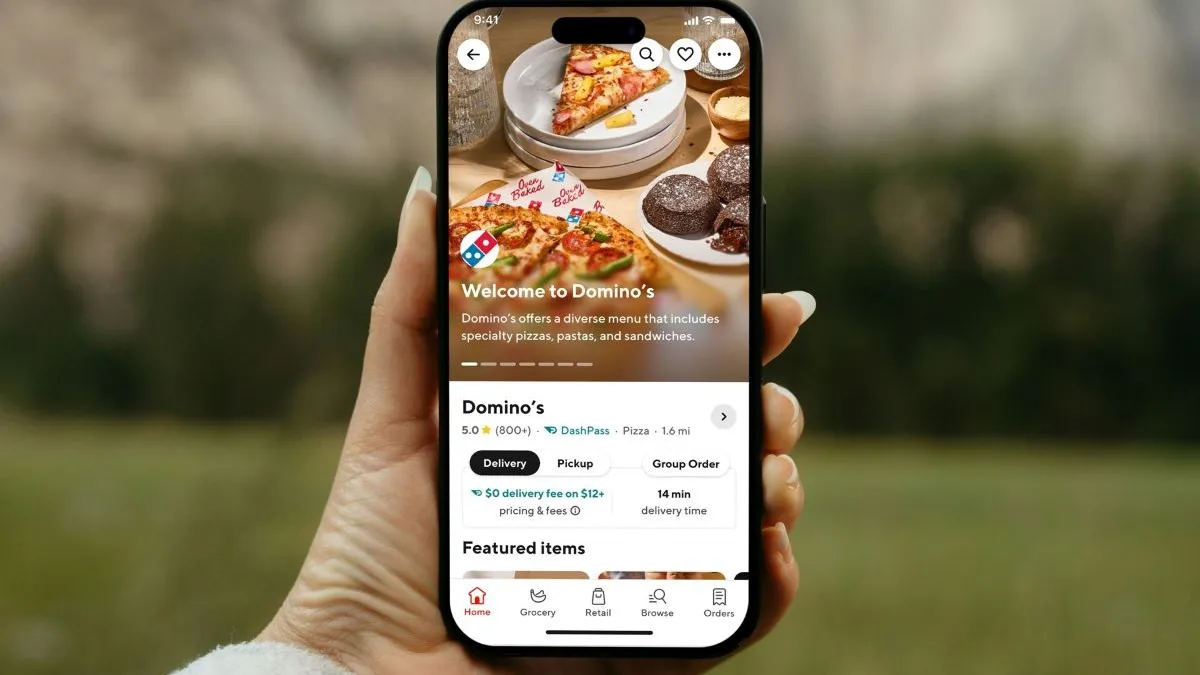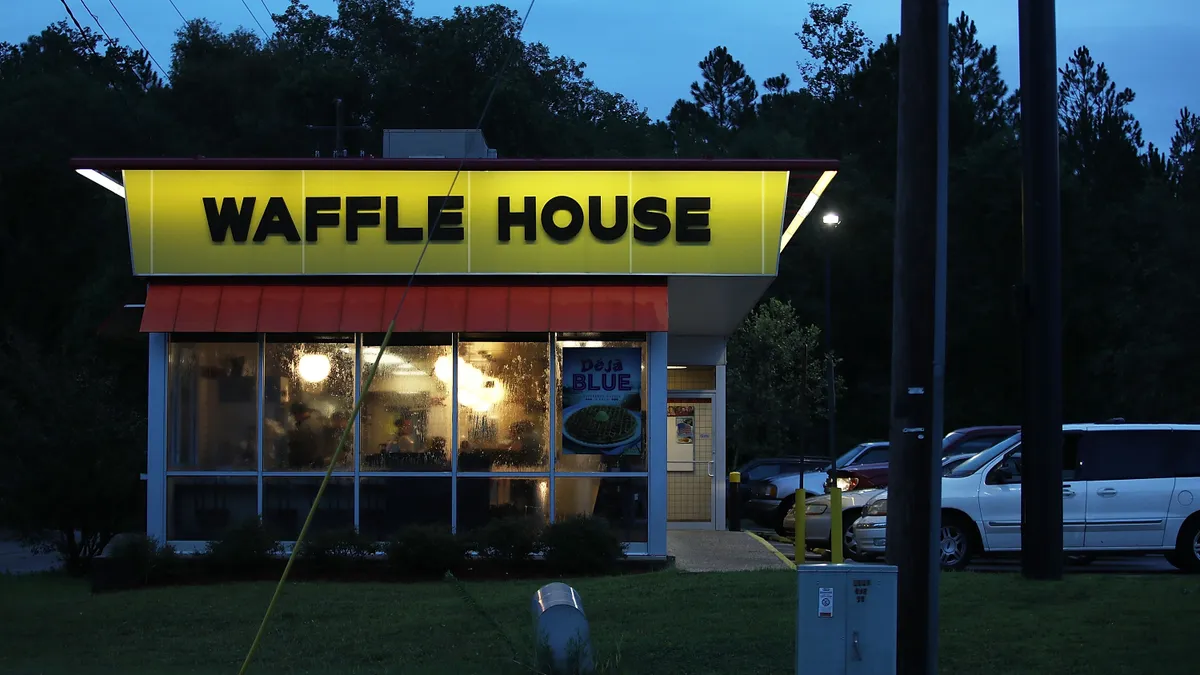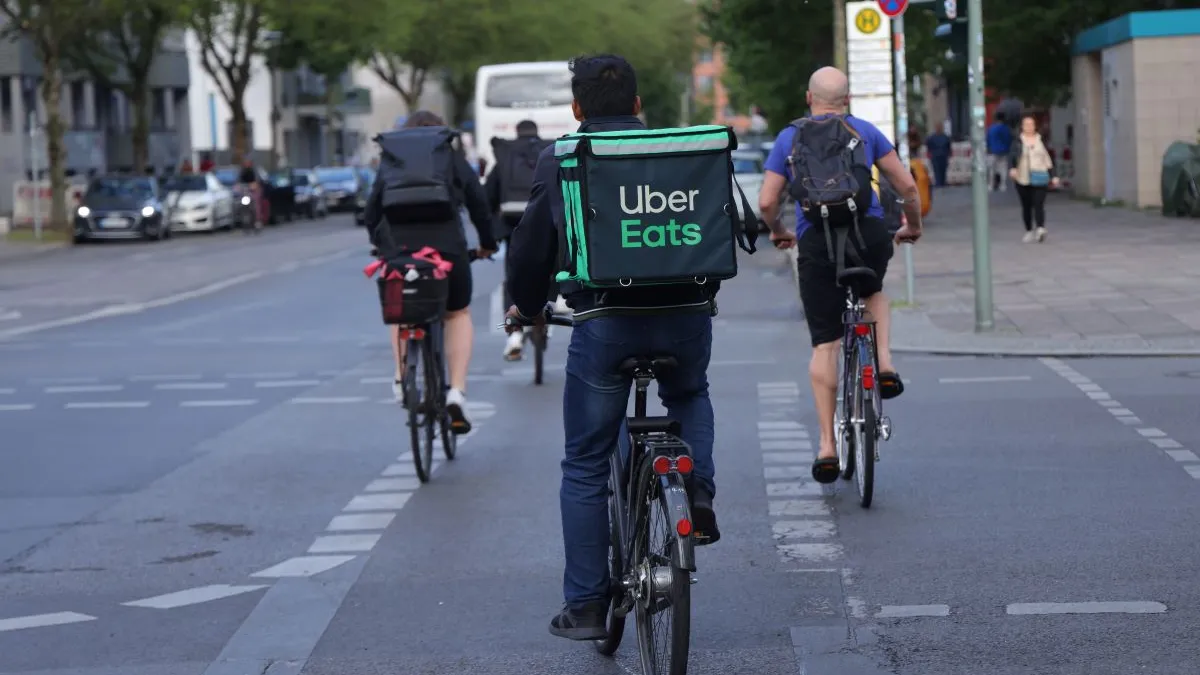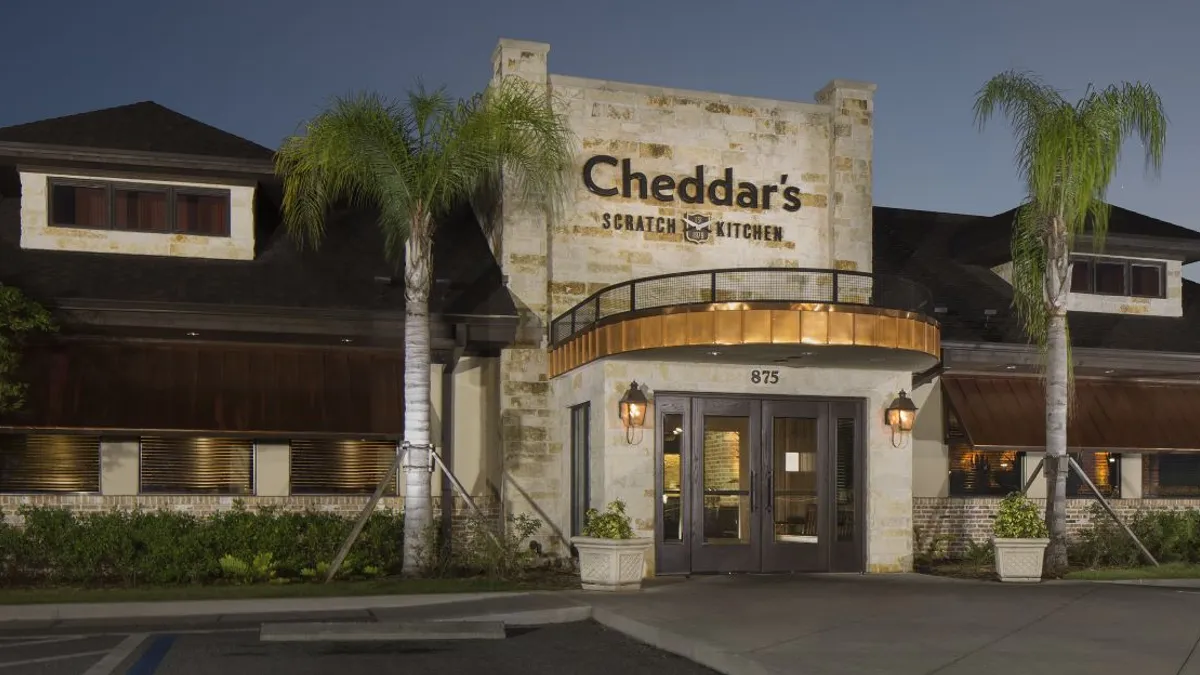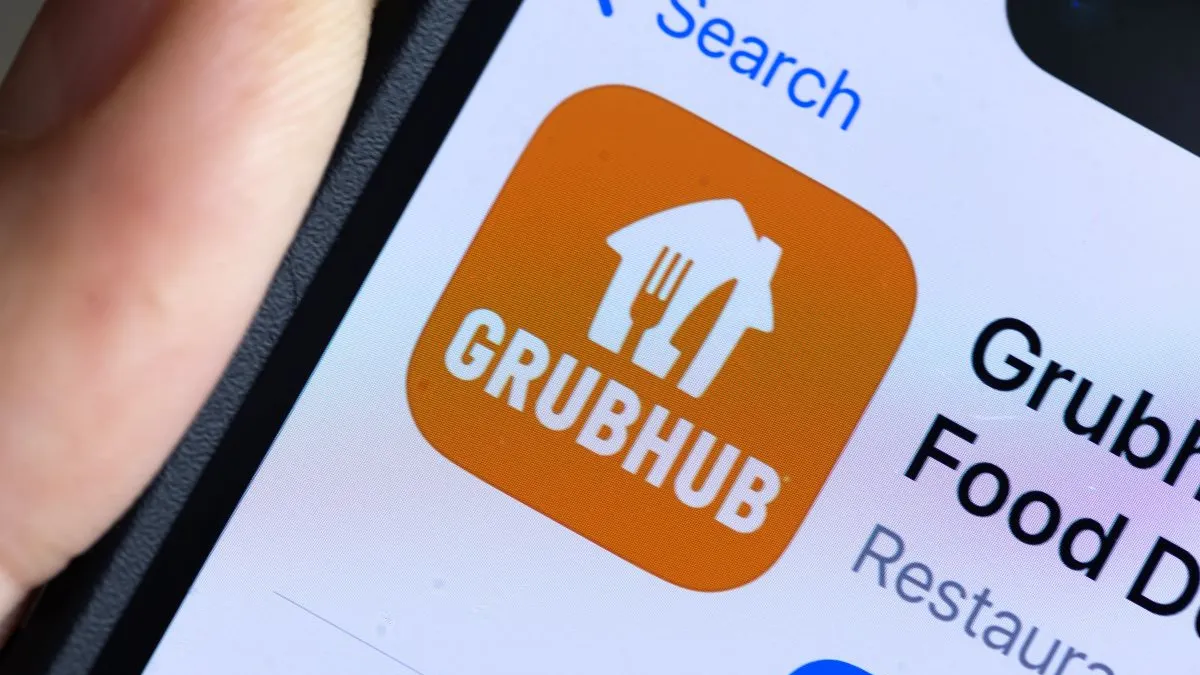On May 12, reports broke that Uber approached Grubhub in a bid to acquire one of its primary rivals in the restaurant delivery space, with talks reportedly continuing into the weekend.
Neither company has confirmed nor denied reports of a merger, but a deal of this size could send shockwaves through an already evolving restaurant industry.
With less competition, restaurants may lose some negotiating power, experts told Restaurant Dive, and that could push operators into thinking of new ways to maintain off-premise operations without having to pay hefty commissions. Even though Uber’s potential purchase of Grubhub is just the latest in a long list of rumored mergers, there are some key reasons analysts are taking this seriously and why restaurants should pay attention.
The first mega delivery merger?
While there has been speculation about Grubhub takeovers in the past, specific details that have emerged about Uber’s potential offer terms give these rumors merit, Peter Saleh said in a recent BTIG report emailed to Restaurant Dive.
The Wall Street Journal, for example, reported that the merger could be an all-stock deal with Grubhub. The New York Times reported that Grubhub was seeking two Uber shares for each of its own shares, which would equate to about $6.1 billion, or a 25% premium to Grubhub’s closing price on May 11. This weekend, however, the Grubhub's CEO Matt Maloney reportedly rejected Uber CEO Dara Khosrowshai's latest offer of 1.9 of its shares for every Grubhub share, saying that price was too low, according to The Wall Street Journal, which cited sources familiar with the deal. Uber said it could offer up to 1.925 Uber shares, but it is still below the original two shares Grubhub originally sought.
Uber also stands to capture unique advantages with a Grubhub acquisition that it wouldn’t gain if it bought a different rival.
Grubhub controls two-thirds of the food delivery market share in New York City, a location that holds a lot of opportunity to capture large corporate customers. Uber could offer major firms looking to bundle free rides and meal delivery in employee perks packages, a person familiar with Uber told Restaurant Dive. The combination of consolidating the New York City market, accessing high margins from corporate customers that may have previously partnered with Grubhub and leveraging Uber’s ride business could be compelling to both companies.
But if this deal does become reality, there will be several obstacles.
For one, the deal may not easily pass regulatory scrutiny due to the significant market share a combined company would enjoy in the food delivery sector, Saleh said. A combination of Uber Eats and Grubhub would equate to about 55% of the U.S. food delivery market share, according to The New York Times, and DoorDash would be the next largest competitor at about 35%.
House antitrust leader Rep. David Cicilline has already criticized the deal calling it “pandemic profiteering,” according to Law360.
“We cannot allow these corporations to monopolize food delivery, especially amid a crisis that is rendering American families and local restaurants more dependent than ever on these very services,” he said in a statement.
Even before COVID-19, local governments were considering fee caps on delivery providers, and since the outbreak, many have enacted emergency orders to cap delivery fees at 10% to 15%. Saleh added that these fees aren’t likely to be eliminated any time soon, especially if the companies merge. With fewer companies, they would have more control over pricing, leading regulators to want to cap fees going forward.
These caps could inevitably impact overall profitability of the two combined companies.
“We believe this transaction is about driving scale by merging UberEats [sic], a company with significant exposure to enterprise brands (chains) with Grubhub a brand with a strong legacy of service with independent operators,” Saleh said in the report. “While we do see synergies by combining these brands, we are unsure how scale will drive increased profitability.”
Grubhub noted a few months ago that it was losing $2.50 for every QSR order. Saleh said it is difficult to see if the merger would be enough to reach profitability per order.
A new era of consolidation
Even if the deal stalls, this could still be the beginning of a new stage of consolidation for the delivery industry.
Profitability is a consistent issue across all third-party services. “The competition is so fierce that none of them are making money. And until last year when Uber went public, they're all being funded by private equity dollars that were being thrown at each other. There needs to be some rationalization that comes with consolidation,” former Uber Chief Business Officer Emil Michael said.
Profitability was a particular sticking point last year for investors who were becoming less willing to fund losses as readily as they had in the past.
“I think the industry, to thrive, needs some consolidation for sure. Because none of the four major participants in this market, DoorDash, Uber Eats, Grubhub or Postmates, is remotely profitable,” Michael said.
Josh Benn, managing director and global head of consumer, food, restaurant and retail M&A at Duff & Phelps, agrees. He told Restaurant Dive that consolidation is inevitable and part of the industry’s maturation.
“Consumers will increasingly want to have one, two, maybe three options that they can rely on basically all over the country for their food delivery needs, and thinking of five and six names out there, it's just overwhelming and it doesn't feel efficient from a consumer standpoint,” Benn said.
The current downturn has also decreased company valuation and stock prices compared to six months ago, which could lower the price of an acquisition, said Michael Schaefer, global lead, food and beverage at Euromonitor International. That could put more pressure on companies to sell themselves because stockholders would be getting less from stocks as well.
"Consumers will increasingly want to have one, two, maybe three options that they can rely on basically all over the country for their food delivery needs, and thinking of five and six names out there, it's just overwhelming and it doesn't feel efficient from a consumer standpoint."

Josh Benn
Managing Director, Duff & Phelps
“If anything it increases the pressure to consolidate, as the delivery environment globally is very mixed — some markets are booming, others are struggling as consumers cut back on all restaurant spending,” Schaefer told Restaurant Dive.
Dwindling exclusivity with major restaurant chains could also accelerate the M&A activity to some degree, Benn said.
The move away from exclusivity has only accelerated due to the coronavirus pandemic, but has been ongoing since last year. Restaurants are expanding their delivery footprints through different platforms to try and reach more customers. Shake Shack was originally planning to nix its integrated partnerships with multiple providers in favor of an exclusive deal with Grubhub, but instead expanded into more marketplaces with Uber Eats, DoorDash, Postmates and Caviar, to help drive more sales during and after the crisis. Uber Eats took a hit when it lost its exclusivity with McDonald’s in 2019 after the chain renegotiated commission fees at the request of franchisees that wanted better terms and access to more platforms. McDonald’s has since partnered with DoorDash and Grubhub.
“I do believe that there will be additional consolidation among the third-party delivery platforms as the emphasis on growing market share and operational efficiencies will sustain,” Benn said.
On the other hand, an acquirer could be attracted to a delivery platform with exclusive relationships because it would gain their users and partnerships, he said.
Uber Eats has an exclusive deal with Starbucks while Chili’s partners only with DoorDash. Grubhub has a long-term relationship with Yum Brands after the fast food corporation invested $200 million in the delivery company. Yum, specifically, could benefit from the potential merger because Uber Eats’ global reach could help it drive sales for KFC and Pizza Hut divisions internationally, Saleh said.
Aggregators may profit, but consolidation could undermine restaurant power
So far, delivery providers have mainly focused on growing market share to get ahead, but that comes at a cost. Many have quickly expanded into new markets, offering free delivery to attract new customers and heavily promoting their services through ads and commercials.
“Competition in food delivery is extremely expensive — aggregators compete for customers, for restaurants, and in many cases for drivers,” Schaefer said.
Subsidies and incentives come at a huge cost, but merging two large players could help whittle this down by reducing competition, which could ultimately help remaining players come closer to sustainable profitability, he said.
Consolidation could also lead to less competition in specific markets.
“[Aggregators] are going to use scale to become more efficient whether that means they exit markets or consolidate their support services,” Scott Gittrich, Toppers Pizza president and founder, told Restaurant Dive. Toppers self-delivers and works with third-party aggregators.
Uber Eats has already exited some small markets where it’s not a top provider, a strategy that could benefit restaurants that use direct delivery in small markets and third-party aggregators in larger, more urban areas.
"Competition in food delivery is extremely expensive — aggregators compete for customers, for restaurants, and in many cases for drivers."

Michael Schaefer
Global Lead, Food and Beverage, Euromonitor International
An Uber/Grubhub merger would also leave DoorDash and Postmates as the last major, standalone delivery titans and candidates for a merger. But because Postmates is mainly a one-town business in Los Angeles— and DoorDash is also quickly gaining ground in that market — DoorDash wouldn’t necessarily need to buy Postmates to grow even in a consolidating market, a person familiar with Uber told Restaurant Dive.
But a combined Uber/Grubhub could drive consolidation more quickly overseas than in the U.S., the source said, especially in hotly contested Latin America, Europe and Southeast Asia markets, where SoftBank has backed many delivery competitors and Uber Eats is competitive.
Profitability gained through consolidation, however, could come at the cost of restaurants.
Less competition will inevitably shift how delivery providers interact with customers and restaurants.
Currently COVID-19 continues to grow the number of restaurants on third-party delivery platforms even as restaurants still debate whether these relationships are actually benefiting them during the downturn.
“[Major delivery platforms] are still losing millions of dollars and yet they took over and they are controlling the prices. They take 20% to 40% from mom-and-pop restaurants [who] have no choice because if they want to stay in business, they have to work with them,” Ido Levanon, CEO of restaurant tech company Dragontail Systems, told Restaurant Dive.
Delivery companies have been renegotiating their pricing with restaurants, especially chains, within the last few months, but consolidation could change that. Uber, which used to be on the high side of pricing, could regain pricing power, which could boost profits.
“More players means more competition for restaurants, which drives commissions down,” Schaefer said. “With less competition, aggregators could potentially charge restaurants more, pay drivers less on average and require fewer deals to retain customers.”
Restaurants could also experience reduced visibility with fewer platforms. These forces could push restaurants to pursue lower-cost delivery-focused models, Schaefer said.
But there could be some potential upside for restaurants, too, if combining resources make Uber/Grubhub more efficient without adding numerous fees that could hurt smaller restaurants.
“I don't want any one [delivery provider] to have a monopoly,” Tony Muniz, COO of Famous Dave’s franchise Famous Dave’s Blue Ribbon, told Restaurant Dive. “But it's good that we don't lose any [delivery] providers right now ... like what would happen if we lost a major trucking company? That would be tough, it would be harder for the supply chain. I feel the same way about Grubhub and all of the [delivery providers], that if we lose one at this point in time it would really impact the consumer negatively.”
Michael adds, “One of the casualties of this competitive war between four companies... that war manifests as subsidies being thrown at the consumer, like get $10 off a meal or to the couriers, 'Hey, take this order from us and don't take it from DoorDash so they can have short delivery times and all that, is a lack of investment in R&D. Right now the money has been totally spent on market share and none spent on making the restaurant’s life better.”
If consolidation means delivery platforms could shift more funds toward improving restaurant supply chains, inventory needs and efficiency, there could be a more symbiotic aggregator-restaurant relationship on the horizon, but greater aggregator control of the market could leave restaurants even more vulnerable at a time when every dollar counts.
Correction: A previous article misidentified the founder and president of Toppers Pizza. Scott Gittrich is the founder and president of the pizza chain.




